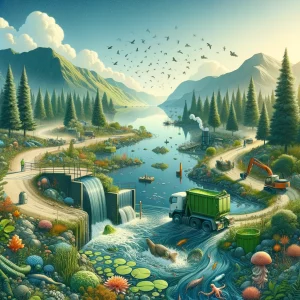 Environmental bio dredging works through the process of bioremediation, where selected microorganisms break down organic matter and pollutants in water bodies, such as lakes, rivers, and ponds. These microbes target excess nutrients that cause harmful algal blooms, as well as pollutants like hydrocarbons and heavy metals, converting them into harmless substances. This process not only improves water quality but also enhances the habitat for aquatic life, promoting biodiversity and ecological balance.
Environmental bio dredging works through the process of bioremediation, where selected microorganisms break down organic matter and pollutants in water bodies, such as lakes, rivers, and ponds. These microbes target excess nutrients that cause harmful algal blooms, as well as pollutants like hydrocarbons and heavy metals, converting them into harmless substances. This process not only improves water quality but also enhances the habitat for aquatic life, promoting biodiversity and ecological balance.
The environmental benefits of bio dredging are significant. By avoiding the physical removal of sediment, bio dredging minimizes the disturbance to aquatic ecosystems and the surrounding environment. This technique supports the preservation of wildlife and maintains the natural aesthetics of waterways, contributing to the overall health of our planet’s water bodies. Additionally, bio dredging is a testament to sustainable practices, reducing carbon footprints associated with traditional dredging operations and aligning with global efforts to combat climate change.
Economically, environmental bio dredging offers a cost-effective solution for waterway maintenance. It reduces the need for expensive machinery and labor, lowering the overall cost of restoration projects. Moreover, the improved water quality and aesthetics can enhance recreational opportunities and increase property values in adjacent areas, benefiting local communities and economies.
In conclusion, environmental bio dredging stands at the forefront of sustainable environmental management. Its application represents a harmonious approach to restoring and preserving our water bodies, ensuring they remain vibrant and healthy for future generations. As awareness and adoption of this technique grow, it paves the way for a more sustainable and ecologically responsible future.
